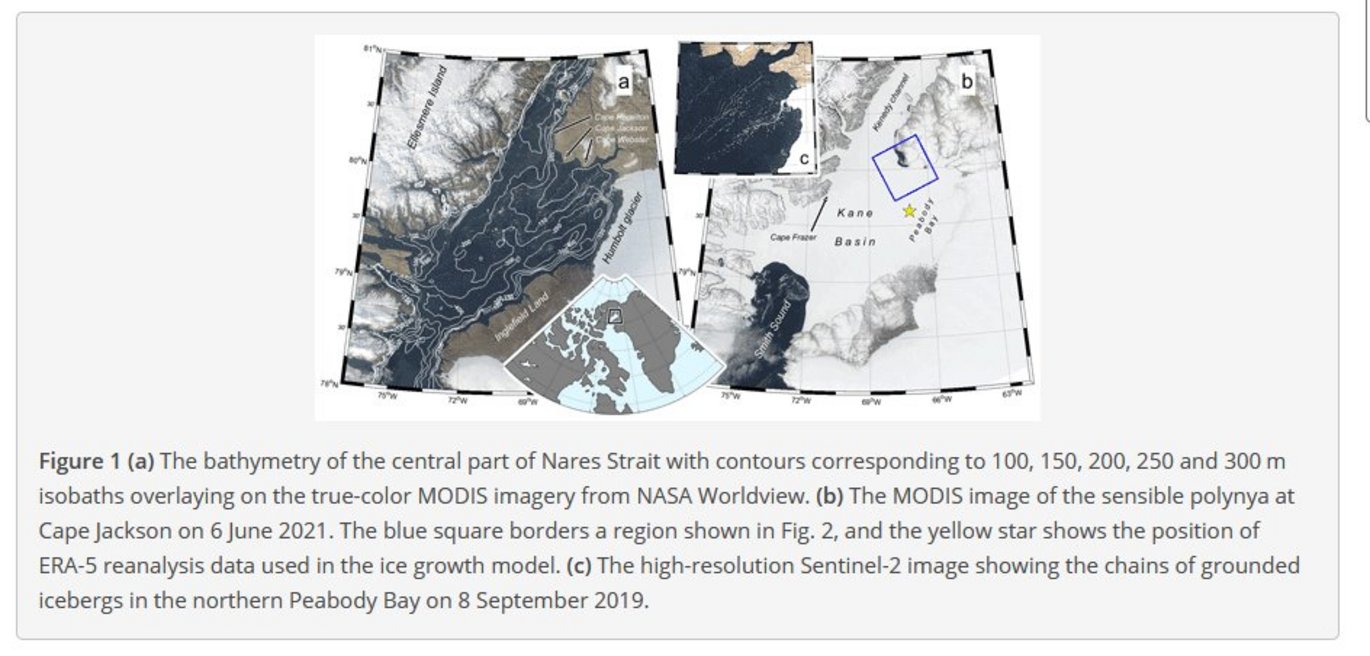The role of oceanic heat flux in reducing thermodynamic ice growth in Nares Strait and promoting earlier collapse of the ice bridge
New publication by Sergei Kirillov, Igor Dmitrenko, David G. Babb, Jens K. Ehn, Nikolay Koldunov, Søren Rysgaard, David Jensen, David G. Barber

Abstract:
The ice bridge in Nares Strait is a well-known phenomenon that affects the liquid and solid freshwater flux from the Arctic Ocean through the strait and controls the downstream North Open Water polynya in northern Baffin Bay. Recently, the ice bridge has been in a state of decline, either breaking up earlier in the year or not forming at all and thereby increasing the sea ice export out of the Arctic Ocean. The decline in the ice bridge has been ascribed to thinner and therefore weaker ice from the Arctic Ocean entering Nares Strait; however, local forcing also affects the state of the ice bridge and thereby influences when it breaks up. Using a variety of remotely sensed data we examine the spatial patterns of sea ice thickness within the ice bridge, highlighting the presence of negative ice thickness anomalies on both the eastern and western sides of the strait and identifying a recurrent sensible heat polynya that forms within the ice bridge near Cape Jackson in northwestern Greenland. Using the sea ice-ocean model FESOM2, we then attribute these ice thickness anomalies to the heat from warmer subsurface waters of Pacific and Atlantic origin that reduce thermodynamic ice growth throughout winter on the western and eastern sides, respectively. The consequently weaker and thinner areas within the ice bridge are then suggested to promote instability and earlier breakup. This work provides new insight into the structure of the Nares Strait ice bridge and highlights that warming of the modified Atlantic and/or Pacific waters that enter the strait may contribute to its further decline. © 2022 The Author(s).
https://doi.org/10.5194/os-18-1535-2022
